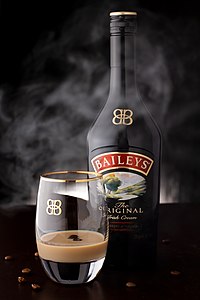
Photo from wikipedia
The objective of the present study was the assessment and quantitative description of the growth behavior of Listeria monocytogenes as a function of temperature in vanilla cream pudding, formulated with… Click to show full abstract
The objective of the present study was the assessment and quantitative description of the growth behavior of Listeria monocytogenes as a function of temperature in vanilla cream pudding, formulated with or without cinnamon extract. Commercially prepared pasteurized vanilla cream pudding, formulated with (0.1% w/w) or without cinnamon extract, was inoculated with a five-strain mixture of L. monocytogenes (ca. 2logCFU/g) and stored aerobically at 4, 8, 12 and 16°C. At appropriate time intervals, L. monocytogenes populations were determined, and the primary model of Baranyi and Roberts was fitted to the derived microbiological data for the estimation of the pathogen's growth kinetic parameters. The effect of temperature on maximum specific growth rate (μmax) was then modeled for each product type using a square-root-type model, and the developed models were validated using independent growth data generated during storage of inoculated vanilla cream samples under dynamic temperature conditions. Although the kinetic behavior of the pathogen was similar in cream with and without cinnamon extract during storage at higher temperatures, significant (P<0.05) differences were observed between the two product types at 4°C. With regard to secondary modelling, the estimated values of Tmin for cream with and without cinnamon extract were 0.39°C and -2.54°C, respectively, while the dynamic models exhibited satisfactory performance. Finally, as demonstrated by the findings of pulsed-field gel electrophoresis, both temperature and cinnamon extract affected the pathogen's strains dominating during storage. According to the collected data, cinnamon extract exhibits an important potential of enhancing the microbiological safety of vanilla cream pudding, provided that efficient temperature control is in place. The developed models should be useful in quantitative microbial risk assessment regarding the studied cream products.
Journal Title: Food research international
Year Published: 2018
Link to full text (if available)
Share on Social Media: Sign Up to like & get
recommendations!